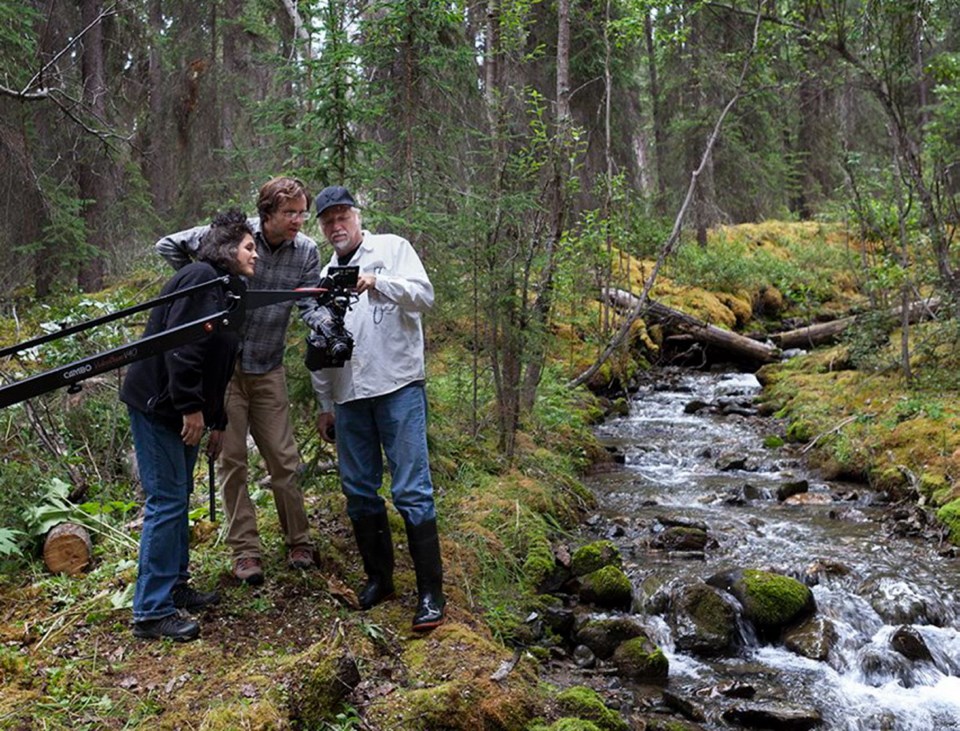After Jennifer Baichwal wrapped Watermark, her quietly provocative and visually stunning meditation on the precious resource she co-directed with Edward Burtynsky, her husband, cinematographer Nicholas de Pencier, gave her an ultimatum.
“He said the next film we do has to be one subject, one camera, one location,” the globe-trotting filmmaker said laughing, as she recalled De Pencier’s reaction to three years of collaboration on the film that links 20 story threads from 10 countries.
Baichwal, born in Montreal and raised in Victoria, will do a question-and-answer session after tonight’s 6:50 show at the Odeon.
De Pencier, whose previous collaborations with his wife include Manufactured Landscapes, Act of God and Let it Come Down: The Life of Paul Bowles, also co-produced Watermark at a pace the couple has grown accustomed to on exotic shoots.
“These massive themes are challenging, especially trying to find the rhythm of the story,” admitted Baichwal, who previously worked with Burtynsky on Manufactured Landscapes in 2006. She then followed the renowned Canadian art photographer to China and beyond as he captured stunning, unsettling imagery of industrial waste that was at once toxic and seductive.
They teamed up again after Burtynsky was commissioned by National Geographic to shoot images of water in California.
“They have so little water of their own and when we saw those photos we all said ‘This was the one,’ ” recalled Baichwal, who researched for a year and edited for 11 months after their long shoot. “Air’s the only other thing bigger than water.”
The film, the third part of Burtynsky’s Water series, opens dramatically with a massive, thunderous torrent of water from a Chinese arch dam that cuts to a powerful snapshot of drought — silent images of a cracked, bone-dry Colorado river basin. It sets the stage for a narratively sparse study of contrasts exploring our relationship with an element we take for granted.
Indeed, the visuals — many captured through stunning aerial photography — largely speak for themselves. Breathtaking shots of geometric landscapes are intercut with images such as disturbing footage of a leather-tanning factory producing toxic runoff in Dhaka, Bangladesh, and a mindboggling excursion into China’s Xiluodo Dam, six times the size of the Hoover Dam.
Other striking examples of how humans are drawn to water range from images of a Hindu pilgrimage to India’s Ganges River, where 30 million people have a sacred bath simultaneously, to the bizarre sight of tourists marvelling at gushing fountains in Las Vegas. There are also images of floating abalone farms off China’s Fujian coast, scientists drilling deep ice cores into the Greenland ice sheet and the compelling sight of Chinese rice paddies that seem mosaic-like.
The logistical challenges could be daunting and hair-raising as the collaborators captured 200 hours of raw footage.
“We had remote helicopters, real helicopters and lifts, and we shot mostly in 5K [ultra high-definition],” said Baichwal. “It was this kind of organic, moving experience. Ed would focus on the wide view and Nick and I would find the little stories. We like each other and have similar approaches.”
Baichwal’s visit to pristine watersheds in northern B.C., notably the Stikine, for “source” footage moved her deeply.
“I had tears in my eyes,” she said. “Those salmon-bearing rivers affect the whole ecosystem of the northwest coast. It was extraordinary to see it as being a receptacle for resource extraction. There needs to be a balance.”
Don’t expect Watermark to be an example of activist filmmaking, however. Baichwal had no trouble resisting that impulse.
“Ron Fricke told Ed that when he sensed a narrative thread forming, he broke it,” she said, discussing comparisons with lyrical, impressionistic films such as Fricke’s Samsara or Godfrey Reggio’s Koyaanisquatsi. “We tried to create a totally immersive experience, kind of like a river of stories that lets you become part of these different iterations of water around the world that you’d never see.”
While Baichwal acknowledges activist filmmaking can be powerful, she feels it also preaches to the converted.
“In our kind of film you create a space to just think about something other than tell the viewers what to think,” she said. “I tried to do illumination through juxtaposition.”



